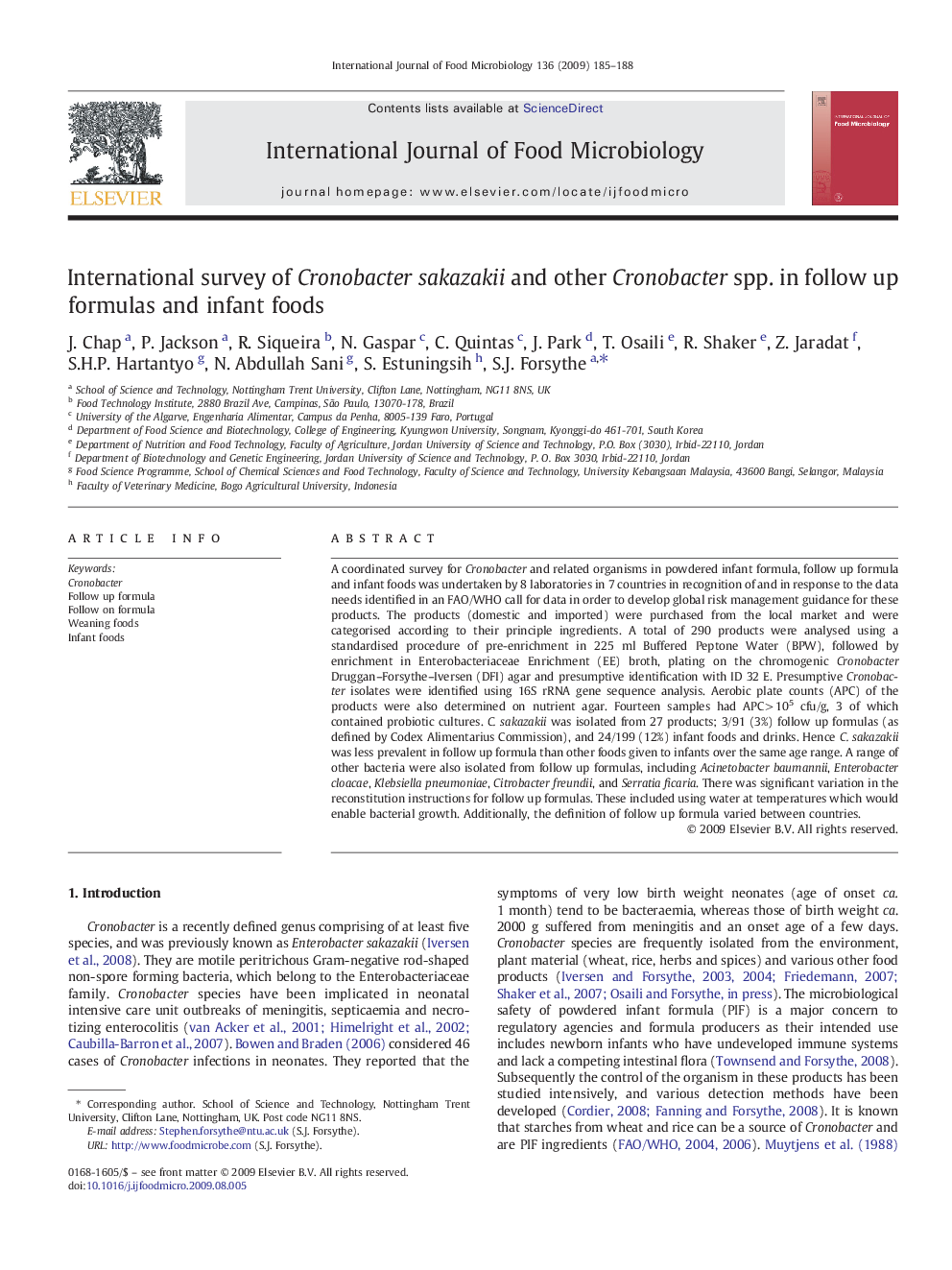| کد مقاله | کد نشریه | سال انتشار | مقاله انگلیسی | نسخه تمام متن |
|---|---|---|---|---|
| 4368466 | 1616696 | 2009 | 4 صفحه PDF | دانلود رایگان |
عنوان انگلیسی مقاله ISI
International survey of Cronobacter sakazakii and other Cronobacter spp. in follow up formulas and infant foods
دانلود مقاله + سفارش ترجمه
دانلود مقاله ISI انگلیسی
رایگان برای ایرانیان
موضوعات مرتبط
علوم زیستی و بیوفناوری
علوم کشاورزی و بیولوژیک
دانش تغذیه
پیش نمایش صفحه اول مقاله

چکیده انگلیسی
A coordinated survey for Cronobacter and related organisms in powdered infant formula, follow up formula and infant foods was undertaken by 8 laboratories in 7 countries in recognition of and in response to the data needs identified in an FAO/WHO call for data in order to develop global risk management guidance for these products. The products (domestic and imported) were purchased from the local market and were categorised according to their principle ingredients. A total of 290 products were analysed using a standardised procedure of pre-enrichment in 225Â ml Buffered Peptone Water (BPW), followed by enrichment in Enterobacteriaceae Enrichment (EE) broth, plating on the chromogenic Cronobacter Druggan-Forsythe-Iversen (DFI) agar and presumptive identification with ID 32 E. Presumptive Cronobacter isolates were identified using 16S rRNA gene sequence analysis. Aerobic plate counts (APC) of the products were also determined on nutrient agar. Fourteen samples had APCÂ >Â 105Â cfu/g, 3 of which contained probiotic cultures. C. sakazakii was isolated from 27 products; 3/91 (3%) follow up formulas (as defined by Codex Alimentarius Commission), and 24/199 (12%) infant foods and drinks. Hence C. sakazakii was less prevalent in follow up formula than other foods given to infants over the same age range. A range of other bacteria were also isolated from follow up formulas, including Acinetobacter baumannii, Enterobacter cloacae, Klebsiella pneumoniae, Citrobacter freundii, and Serratia ficaria. There was significant variation in the reconstitution instructions for follow up formulas. These included using water at temperatures which would enable bacterial growth. Additionally, the definition of follow up formula varied between countries.
ناشر
Database: Elsevier - ScienceDirect (ساینس دایرکت)
Journal: International Journal of Food Microbiology - Volume 136, Issue 2, 31 December 2009, Pages 185-188
Journal: International Journal of Food Microbiology - Volume 136, Issue 2, 31 December 2009, Pages 185-188
نویسندگان
J. Chap, P. Jackson, R. Siqueira, N. Gaspar, C. Quintas, J. Park, T. Osaili, R. Shaker, Z. Jaradat, S.H.P. Hartantyo, N. Abdullah Sani, S. Estuningsih, S.J. Forsythe,